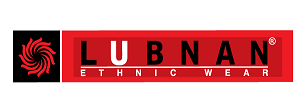Introduction to Canada’s Immigration Landscape
Canada has long been a beacon for skilled professionals seeking new opportunities, and the country’s immigration policies reflect this. For engineers, particularly those in the aerospace and software sectors, Canada offers a unique blend of career growth, cultural diversity, and a high standard of living. This article will delve into the pathways to employment for engineers in Canada, highlighting the visa processes, job opportunities, and the country’s commitment to attracting top talent.
Pathways to Employment for Aerospace Engineers
Education and Qualifications
To work as an aerospace engineer online casinos accepting visa in Canada, one must obtain a bachelor’s degree in aerospace engineering or a related field. Additionally, securing a Professional Engineer (P.Eng.) designation is crucial for many roles in the industry[1]. The Canadian government recognizes the importance of aerospace engineering and has included it in its list of sought-after occupations, creating new opportunities for foreign aerospace engineers to contribute to Canada’s aerospace sector.
Job Opportunities
Positions in aircraft design, maintenance, and research are abundant nationwide. Indeed.com Canada and Job Bank feature numerous job listings, providing a diverse array of roles. Salaries vary by experience and specialization, with senior roles in Mississauga (Lake Ontario) and Mirabel (suburb of Montreal) offering competitive remuneration[1]. The NOC code for Aircraft Design Engineer is 21461, with an average annual salary of approximately C$70,000. Average salary varies by experience level: Entry-level earns around C$64,400, required experience (2-5 years) about C$84,200, and late career (10-19 years) about C$88,540.
Immigration Visa Pathways
Immigration, Refugees, and Citizenship Canada (IRCC) recognizes the need to attract talented aerospace engineers worldwide to address increasing job vacancies. To this end, they offer immigration visa pathways for foreign aerospace engineers to apply for permanent residency, bolstering the aerospace workforce in Canada. Aspiring aerospace engineers should prepare the following:
- Application Submission : Upon submission, your application undergoes thorough review by immigration authorities, specifically IRCC.
- Permanent Resident Visa : Once approved, you’ll receive your Permanent Resident Visa, granting you entry into Canada. For those aspiring to work with the Canadian Space Agency, this visa is a crucial step towards pursuing opportunities in the aerospace sector[1].
Pathways to Employment for Software Engineers
Education and Qualifications
To move to Canada as a software engineer, one must meet specific educational and professional requirements. A bachelor’s degree in computer science or a related field is typically required. Additionally, having a formal job offer can significantly increase your chances of securing a visa and accelerating the immigration process[3].
Job Opportunities
Canada has become a prime destination for software engineers worldwide, offering strong job markets and generous immigration policies. Provinces like Ontario, British Columbia, and Alberta have tech-focused Provincial Nominee Programs (PNPs) to attract skilled software engineers. These programs often yield an additional 600 CRS points, virtually guaranteeing an ITA for permanent residency under Express Entry[3].
Immigration Visa Pathways
Software engineers can leverage various visa pathways to move to Canada:
- Express Entry : This points-based system prioritizes skilled professionals, including software engineers. Strengthening your coding and system design skills through courses like Grokking the Coding Interview and Grokking the System Design Interview will significantly improve your odds of landing a Canadian job offer and excelling in visa applications[3].
- Global Talent Stream (GTS) : This stream is designed for in-demand occupations, including software engineering. Having a formal job offer can accelerate your GTS application and strengthen your Express Entry profile[3].
STEM Category Express Entry
Canada’s Express Entry system has consistently prioritized skilled professionals in science, technology, engineering, and mathematics (STEM). However, recent changes in immigration priorities—focusing more on trades, healthcare, and French-speaking candidates—have led to questions about the future of the STEM category. Here’s a closer look at what these changes could mean for skilled workers planning to immigrate to Canada:
Eligible STEM Occupations
| Occupation | 2021 NOC Code |
|---|---|
| Architects | 21200 |
| Architecture and science managers | 20011 |
| Business systems specialists | 21221 |
| Civil Engineers | 21300 |
| Computer and information systems managers | 20012 |
| Computer engineers (except software engineers and designers) | 21311 |
| Computer systems developers and programmers | 21230 |
| Cybersecurity specialists | 21220 |
| Data scientists | 21211 |
| Database analysts and data administrators | 21223 |
| Electrical and electronics engineers | 21310 |
| Engineering managers | 20010 |
| Industrial and manufacturing engineers | 21321 |
| Information systems specialists | 21222 |
| Land surveyors | 21203 |
| Landscape Architects | 21201 |
| Mathematicians, statisticians and actuaries | 21210 |
| Metallurgical and materials engineers | 21322 |
| Natural and applied science policy researchers, consultants and program officers | 41400 |
| Software developers and programmers | 21232 |
| Software engineers | 21233 |
These draws targeted immigrants with specific qualifications, education, work experience, and language proficiency in key STEM occupations[5].
Conclusion
Canada offers a thriving environment for both aerospace and software engineers, with numerous job opportunities and competitive salaries. The country’s commitment to attracting top talent is evident through its immigration policies and investments in the aerospace sector. Whether you aim for permanent residency through Express Entry or a swift work permit via GTS, Canada remains a welcoming destination for skilled professionals seeking career growth and a top-tier lifestyle.
Resources for Aspiring Engineers
- Job Boards : Indeed.com Canada, Job Bank, LinkedIn Jobs.
- Networking : Attend (virtual) meetups, hackathons, and conferences in Canada-specific developer communities.
- Company Direct Applications : Many fast-growing Canadian tech firms post roles directly on their career pages[3].
- Immigration Resources : IRCC, Provincial Nominee Programs (PNPs), Express Entry, Global Talent Stream (GTS).
By understanding the pathways to employment in Canada, aspiring engineers can navigate the immigration process with confidence, positioning themselves for success in one of the world’s leading industries.

